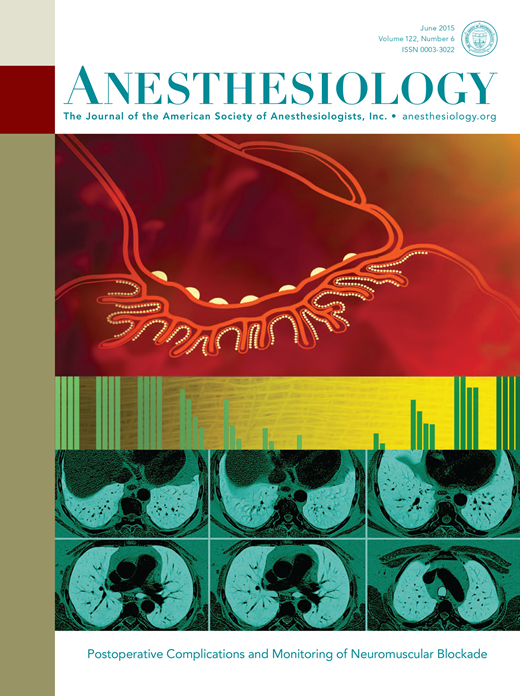醌类似物泛醌-5对小鼠线粒体和催眠的影响。
IF 9.1
1区 医学
Q1 ANESTHESIOLOGY
引用次数: 0
摘要
长期以来,功能性麻醉靶点一直被怀疑位于线粒体内,生物能量能力的破坏被认为在麻醉反应中起作用。不幸的是,线粒体靶活性变化导致临床相关麻醉终点的确切机制尚不清楚。在这里,我们利用异丙酚毒性的知识来指导药物发现,并发现线粒体内以前未知的药理学靶点。我们假设,像异丙酚一样,醌类似物会干扰电子转移,导致线粒体内过多的质子泄漏,并诱导催眠。我们使用短链辅酶Q (CoQ)类似物泛素-5 (Ub5)验证了我们的假设,旨在表征其在小鼠中的麻醉表型,并阐明Ub5诱导的线粒体泄漏的来源。方法采用行为学和神经生理学方法在小鼠体内评价审美表型。我们使用极谱法和分光光度法测量了分离线粒体的生物活性,并使用药物抑制剂、突变小鼠菌株和蛋白脂质体的运输活性测定确定了质子泄漏的来源。最后,我们评估了离体灌注小鼠心脏的心脏毒性作用。结果scoq类似物在心肌细胞线粒体发育过程中引起非代偿性质子泄漏,并引起与异丙酚类似的可逆性心脏毒性。尾静脉注射Ub5诱导短时间翻正丧失,脑电图变化符合深麻醉状态,体内神经元钙瞬态和线粒体膜电位可逆性降低(ΔΨm)。ΔΨm急剧下降在ub5诱导的无意识中发挥了作用,我们确定了天冬氨酸-谷氨酸载体Aralar是ub5介导的质子泄漏的功能靶点和来源。结论除电子传递抑制外,线粒体非代偿性质子泄漏是麻醉反应的重要机制。这些发现促进了我们对麻醉药如何诱导催眠的理解,并为下一代药物的发现奠定了基础。本文章由计算机程序翻译,如有差异,请以英文原文为准。
Effects of the quinone analog, ubiquinone-5, on murine mitochondria and hypnosis.
BACKGROUND
A functional anesthetic target has long been suspected to reside within mitochondria and disruption of bioenergetic capacity is believed to play a role in the anesthetic response. Unfortunately, the exact mechanism by which changes in mitochondrial target activity result in clinically relevant anesthetic endpoints remains unknown. Here we leveraged knowledge of propofol toxicity to guide drug discovery and uncover a previously unknown pharmacological target within mitochondria. We hypothesized that, like propofol, quinone analogs would interfere with electron transfer, cause excessive proton leak within mitochondria, and induce hypnosis. We tested our hypothesis using the short-chain coenzyme Q (CoQ) analog, ubiquinone-5 (Ub5), and aimed to characterize its anesthetic phenotype in the mouse and elucidate the source of Ub5-induced mitochondrial leak.
METHODS
Anesthetic phenotype was assessed in vivo in the mouse using behavioral and neurophysiological approaches. We measured biological activity in isolated mitochondria using polarography and spectrophotometry and identified source of proton leak using pharmacological inhibitors, mutant mouse strains, and transport activity assays in proteoliposomes. Finally, we assessed cardiotoxic effects in the isolated-perfused mouse heart ex-vivo.
RESULTS
CoQ analogs caused uncompensated proton leak in developing cardiomyocyte mitochondria and reversible cardiotoxicity in a manner reminiscent of propofol. Tail vein injection of Ub5 induced short-lived loss of righting, EEG changes consistent with a deep state of anesthesia, and reversible decreases in neuronal calcium transients and mitochondrial membrane potential (ΔΨm) in vivo. Precipitous decline in ΔΨm played a role in Ub5-induced unconsciousness and we identified the aspartate-glutamate carrier, Aralar, as a functional target and source of Ub5-mediated proton leak.
CONCLUSIONS
The data indicate that uncompensated mitochondrial proton leak is an important mechanistic contributor to the anesthetic response in addition to electron transport inhibition. These findings advance our understanding of how anesthetics induce hypnosis and lay the foundation for next-generation drug discovery.
求助全文
通过发布文献求助,成功后即可免费获取论文全文。
去求助
来源期刊

Anesthesiology
医学-麻醉学
CiteScore
10.40
自引率
5.70%
发文量
542
审稿时长
3-6 weeks
期刊介绍:
With its establishment in 1940, Anesthesiology has emerged as a prominent leader in the field of anesthesiology, encompassing perioperative, critical care, and pain medicine. As the esteemed journal of the American Society of Anesthesiologists, Anesthesiology operates independently with full editorial freedom. Its distinguished Editorial Board, comprising renowned professionals from across the globe, drives the advancement of the specialty by presenting innovative research through immediate open access to select articles and granting free access to all published articles after a six-month period. Furthermore, Anesthesiology actively promotes groundbreaking studies through an influential press release program. The journal's unwavering commitment lies in the dissemination of exemplary work that enhances clinical practice and revolutionizes the practice of medicine within our discipline.
 求助内容:
求助内容: 应助结果提醒方式:
应助结果提醒方式:


